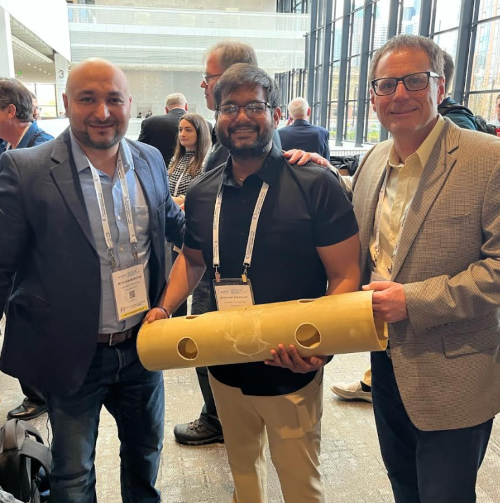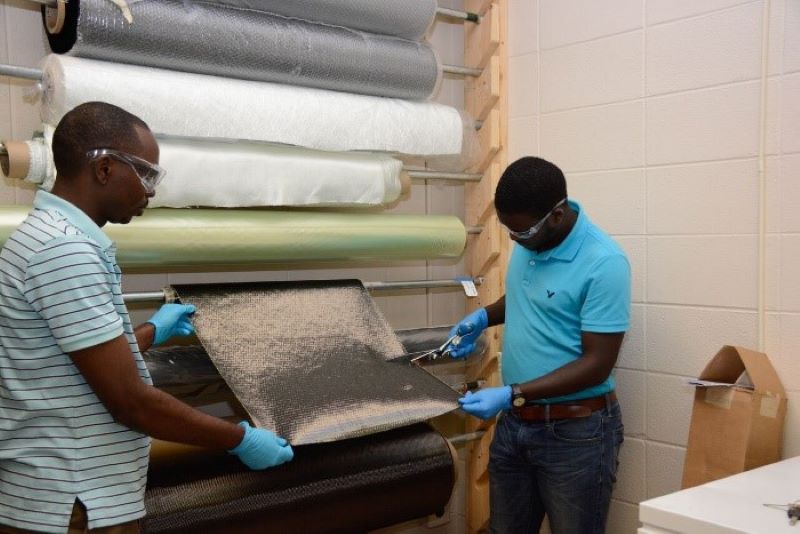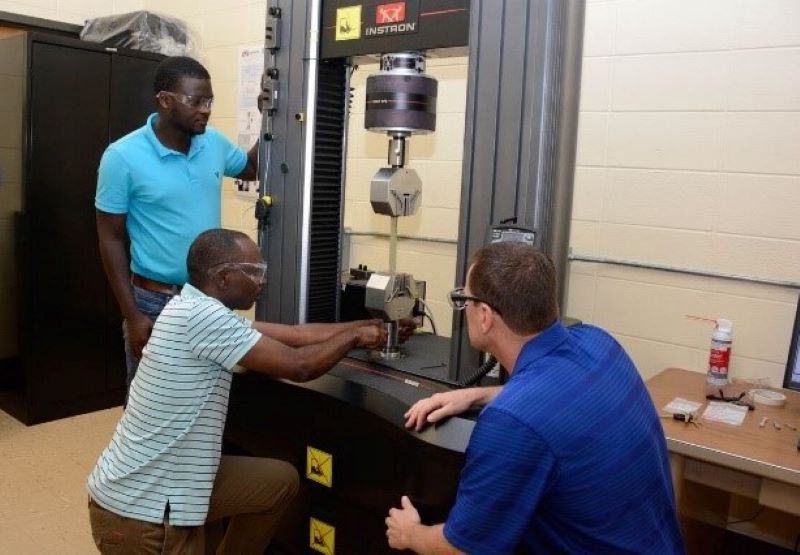Polymers and Composites Lab
Increasing Performance for Aircraft and Spacecraft Applications
The research in the University of Dayton Polymer and Composites Lab revolves around the development and testing of new lightweight materials for aircraft and spacecraft applications, such as composites and adhesives. Our additional focus is on improved flame retardants for these materials, which is a collaboration between the University of Dayton Research Institute (UDRI) and the University of Dayton Department of Chemistry and Department of Civil and Environmental Engineering and Engineering Mechanics. Learn more about the Center for Flame Retardant Material Science.
Dr. Klosterman works with students from the undergraduate to doctoral levels providing relevant hands-on experience in materials preparation, processing and testing. The UD student chapter of SAMPE also utilizes this lab space for the annual composite bridge building contest design competition.
Capabilities
Polymer/Composites Processing
- Wet laboratory facility, fume hoods, glove box, chemical storage, etc.
- Composites wet lay-up and vacuum bagging space
- Autocalve: ASC Econoclave (2 ft. x 4 ft., 800°F/427°C, 200 psi)
- Press: Wabash G75H-18-CX (15 in. x 15 in. platens, 150,000 lbs. force, 1000°F/538°C)
- Oven curing: Blue M / TPS (23.6 in. x 19.6 in. x 29.5 in. high, 500°F/260°C)
- VARTM cell: 2 ft. x 3 ft. table, vacuum pump, catch pot, resin degas chamber, vacuum bag supplies, etc.
- Tube furnaces: Lindberg Blue M (2730°F/1500°C, appox. 24 inches long), Lindberg Blue M (2000°F/1100°C, approx. 30 in. long)
- Wet saws for cutting composites
- Additive Manufacturing: Fortus 400 MC (plastic filaments), 3D Touch (plastic filaments), Concept Laser MLab cusing R (powder metals)
Characterization
- TGA: TA Instruments Q500 (25-1000°C)
- TMA: TA Instruments Q400 (-150-1000°C)
- DSC: TA Instruments Q2000 (-90-550°C)
- DMA: TA Instruments Q800 (-145-600°C)
- Rheometer: Anton Paar parallel plate rheometer MCR 302 (-150-450°C)
- FTIR: Thermo Scientific iS50 with ATR cell
- GPC: Viscotek with various detectors (RI, UV/Vis, dual detector)
- Raman: Renishaw inVia Raman microscope
- X-ray: Rigaku Smart Lab X-ray Diffractometer
- SEM: ProX Phenom table-top SEM
- Optical microcroscopy: Zeiss AX10 (50X, 100X, 200X, 500X, 1000X)
- Metallography: Buehler Automet / Ecomet 250 rotary grinding and polishing unit
- Various scales, and density / buoyancy fixture (ASTM D792)
- Mechanical testing: Instron 5985 load frame with various fixtures (tensile 30,000 lbs., compression, flexure, short beam shear, compression after impact), two load cells (56,000 lbs., 1124 lbs.), extensometers (25 mm, 50 mm), bonded strain gages, and alignment fixture with AlignPro software.



